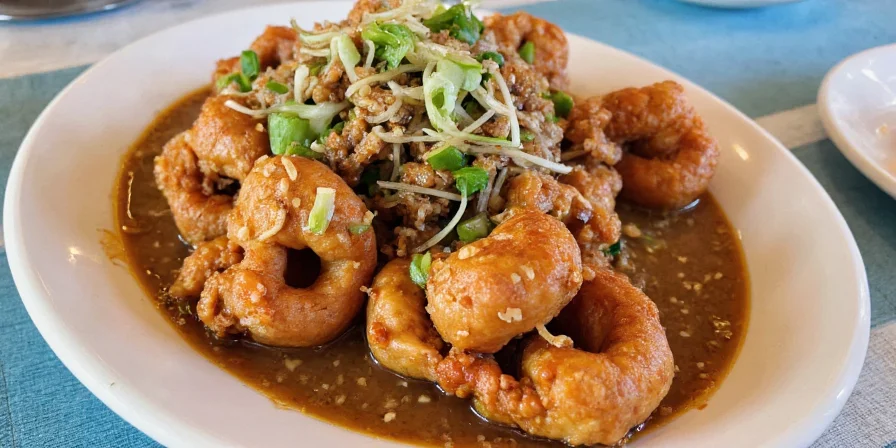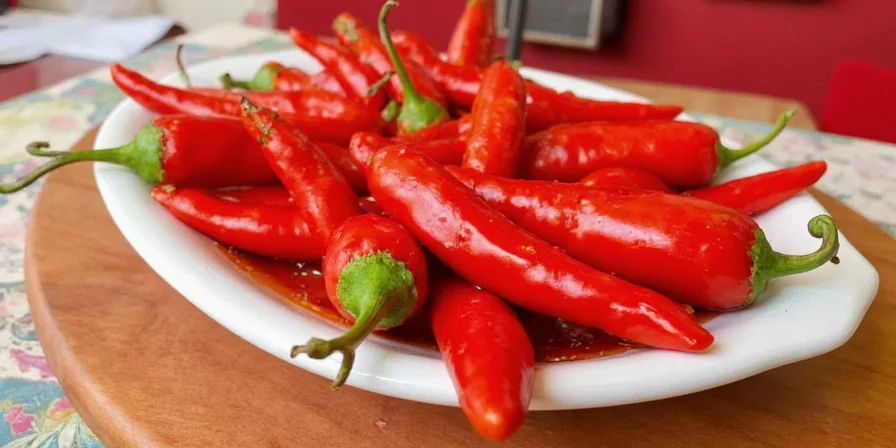Stop making bland, one-dimensional chili! The secret to restaurant-quality chili isn't just ingredients—it's when and how you use them. Follow these 7 practical techniques to transform your next pot from forgettable to phenomenal in under 30 minutes of active cooking time.

Most home cooks make chili that tastes flat because they add spices at the wrong time or skip critical flavor-building steps. These chef-tested methods fix that—starting with what you should do before the meat hits the pot.
1. Toast Your Spices First (The Flavor Booster You're Missing)
Skipping this step wastes 70% of your spices' potential. Toasting releases essential oils that water-based cooking can't extract, creating richer, more complex chili without extra ingredients.
- Heat dry skillet over medium heat for 1 minute
- Add 2 tbsp cumin, 1 tbsp smoked paprika, 1 tsp coriander
- Toast 60-90 seconds until fragrant (don't burn!)
- Immediately transfer to bowl to stop cooking

| Common Mistake | Pro Technique |
|---|---|
| Adding spices directly to liquid | Toast spices in dry pan first |
| Muted, one-dimensional flavor | 3x more aromatic complexity |
Why this works: Heat unlocks volatile compounds that create the 'kitchen perfume' restaurants use to make chili smell irresistible. This is the #1 fix for 'why does my chili taste flat' complaints.
2. Layer Heat in This Exact Order (No More Burn-First Chili)
Great chili builds heat gradually—not all at once. This sequence creates balanced spice that evolves with each bite:
- First 10 minutes: 2 tbsp ancho powder (earthy foundation)
- Middle cook time: 1 tbsp chipotle powder (smoky depth)
- Last 20 minutes: 1 tsp cayenne (bright heat)
- At serving: Fresh jalapeño slices (crisp finish)

Adding heat in stages prevents 'capsaicin overload' where early spice dominates everything else. This solves the 'my chili is too spicy but still bland' paradox.
3. The Sweet-Smoke Balance (Better Than Liquid Smoke)
Store-bought liquid smoke makes chili taste artificial. This natural method creates authentic smokiness while balancing heat:
- ¼ cup dark brown sugar (not white)
- 2 tbsp tomato paste (bloomed in oil first)
- 1 tbsp smoked paprika (not liquid smoke)
- 2 tbsp ketchup (for acidity + sweetness)

Pro tip: Add sugar at the beginning to caramelize with tomatoes—not at the end. This creates deeper flavor than stirring in sugar at serving time.
4. Cinnamon Secret (The Restaurant Trick)
Restaurants use this $0.02 ingredient to make chili taste expensive. It reduces perceived heat while adding complexity:

- Add ⅛ tsp ground cinnamon with toasted spices
- OR one 2-inch cinnamon stick during simmering (remove before serving)
Why it works: Cinnamon interacts differently with heat receptors than chili peppers, tricking your palate into experiencing greater complexity while actually reducing perceived spiciness. This is the solution for 'how to make chili less spicy but more flavorful'.
5. Acid Timing Matters Most (Critical Step!)
Adding acid at the wrong time ruins chili. This simple rule transforms flat-tasting batches:
- Early cooking: 2 tbsp tomato paste (bloomed in fat)
- Final 15 minutes: 1 tbsp apple cider vinegar
- At serving: Fresh lime juice (never before!)

Late-added acid brightens flavors without breaking down ingredients. Adding lime juice at the end—not during cooking—is the #1 fix for 'why does my chili taste flat' issues.
6. Fat Extraction Method (Flavor Multiplier)
Spice compounds dissolve in fat, not water. This technique extracts maximum flavor:
- Brown meat in batches (don't overcrowd!)
- Reserve 1 tbsp rendered fat for blooming spices
- Use this fat—not water—to hydrate dried chilies

Skimping on fat sacrifices flavor extraction. Use 20% leaner meat than you normally would for richer-tasting chili without making it greasy.
7. The Overnight Rest (Game Changer)
Chili always tastes better the next day—but you can accelerate this:

- Cool uncovered for 2 hours (critical step!)
- Refrigerate covered overnight
- Reheat gently + add splash of broth
- Finish with fresh acid at serving
This isn't just 'flavors melding'—scientifically, starches and spice compounds form new flavor molecules during rest. Skipping the initial 2-hour uncovered cooling traps off-flavors.
Quick Answers to Top Chili Questions
How do I fix bland chili fast?
Stir in 1 tbsp apple cider vinegar and ½ tsp smoked paprika during the last 15 minutes of cooking. The acid wakes up flat flavors while the smoked paprika adds instant depth without making it spicy.
Can I skip toasting spices?
You can, but you'll miss 70% of the flavor potential. If short on time, toast spices in your empty pot for 60 seconds before adding oil—cuts preparation time while still unlocking essential oils.
Why does my chili taste sour?
This happens when acid (tomatoes, vinegar) is added too early. Always bloom tomato paste in fat first, and add acidic ingredients during the last 20 minutes. For already-sour chili, stir in 1 tbsp brown sugar during final simmer.
How to make chili less spicy after it's too hot?
Add dairy (½ cup sour cream or heavy cream) OR 2 tbsp peanut butter. Both bind to capsaicin molecules better than sugar or starch. For best results, stir in during final 10 minutes of cooking.
Your Next Pot Will Taste Like a Pro Made It
Forget complicated recipes—these 7 techniques target exactly what makes chili great: layered spice, balanced heat, and deep flavor development. Implement just the toasting and acid timing changes, and you'll notice an immediate improvement in your next batch.

The best part? These methods work whether you're using canned beans or cooking dried from scratch. Start with one technique that solves your biggest pain point, master it, then add another. Before long, you'll be the go-to chili maker in your circle.











 浙公网安备
33010002000092号
浙公网安备
33010002000092号 浙B2-20120091-4
浙B2-20120091-4